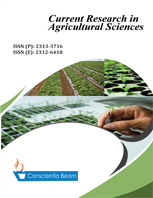The kinetics of strawberry quality changes during the shelf-life
DOI:
https://doi.org/10.18488/cras.v10i1.3304Abstract
Strawberries have a relatively short postharvest life due to their quick softening and decay. When the supply chain is too far along to make logistical adjustments to meet shelf life, quality loss and shelf-life reduction often accelerates with rising temperature. The purpose of this study is to use kinetic modelling to explain how characteristics of strawberry quality vary while they are being stored. To measure the qualities of redness (a*), lightness (L*), chroma colour (C*), weight loss (WL), total soluble solids (TSS), titratable acidity (TA), and total phenolic content (TPC), fresh strawberries were obtained from a farm and stored for 8 days at 4°C and 10°C. The experimental results showed that strawberry quality characteristics stored at 10 °C had a strong and significant impact. After being stored at 10°C, the properties of redness (a*) and lightness (L*) quickly converted to darker zone. During storage at 10 °C, a significant rise in weight loss and chroma was seen with a less apparent decrease in L*. Zero-order and first-order models are used to characterize quality changes that occur during storage. The WL, TSS, and TA properties were best described by the zero-order model. On the contrary, the hue change was described by the first-order model. The results demonstrate that kinetic models fall short in their ability to characterize changes in TPC property during storage. In comparison to strawberries stored at 10°C, the strawberries stored at 4°C carried out the desired result of weight loss, colour change, and TA change.

